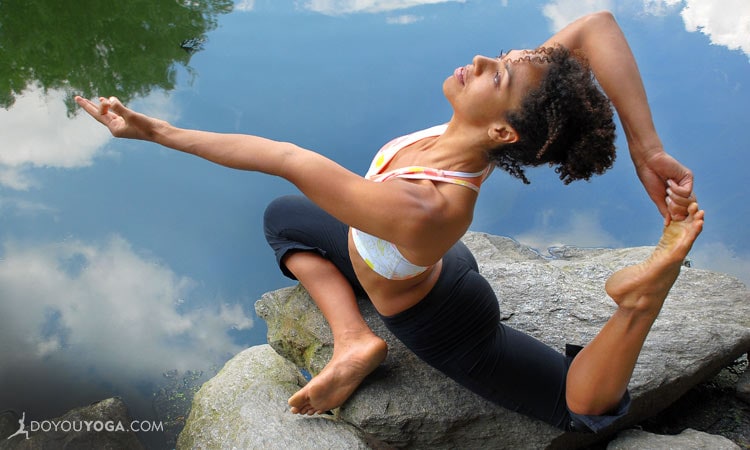It can be frustrating when an exciting pose has been eluding you for months… Or years. You’re doing all the preparatory poses! Your practice is progressing in other ways! You’ve been on your mat daily! Why isn’t this pose happening already?!
Our bodies open up and build strength in mysterious ways. It’s rarely a linear path, and it hardly ever makes sense to us. But there’s more at play in your physical body than, say, a daily practice full of forward folds in attempting to create length along your back body.
Your body holds on to emotion and energy in ways that may seem convoluted or elaborate, but the lessons available to you when you start to understand the messages your joints and muscles are trying to tell you are invaluable.
Here are three memos your body may be trying to send your way.
1. On Extroverting and Introverting
Poses have a certain personality to them. Backbends and heart openers are powerful, extroverting poses pushing you to expand, while forward folds are very introverting, encouraging you to turn inward.
You bring your individual psyche to the mat every time you practice. And if you notice a handful of opening poses that have you stymied, or some lengthening and quieting poses that seem to have plateaued, it may be worth comparing your nature with the energy of the pose.
Of course, there are many introverts with beautiful camel and shoulder-opening poses, just as there are many extroverts who have deep flexibility in standing forward folds. But if you are really stuck on a pose that isn’t fully aligned with your natural energy, think about how you could approach it differently.
Do your shoulders feel tense and locked up? Give yourself some kindness as you open up across your chest, and honor the effort it takes for you to be vulnerable in that pose.
Are you pulling your body inward in seated bends? Perhaps emphasize your breath and sink in on the exhale, allowing gravity to do its job, instead of straining to get your chest closer to your thighs.
2. On Energizing and Quieting
Most yoga students tend to gravitate towards a powerful practice or a restorative practice. Although most devout yogis try all kinds of classes and teachers, either the high energy or calm quietude of a practice usually keeps us coming back.
A balanced yoga practice offers both strength and flexibility; you can’t have one without the other. This is another important consideration with poses that you come up against.
When you keep your practice energy-heavy, lengthening poses focusing on flexibility may seem to stagnate before you’ve mastered something like the splits. If you spend most of your hours on the mat in deep restorative poses, holding Warrior poses or finding stability in balancing poses may elude you.
Again, there are lots of Power yogis who have the passive energy of flexibility down pat, just as there are Yin yogis who can out-handstand some serious Flow practitioners.
There is no real rhyme or reason. But if you find yourself stalling in a pose or sequence, it might serve you to look at your preferences. Give yourself credit for loving what you love, and take note if you need to add to your normal practice in order to achieve goals you’ve set for yourself on the mat.
3. On Repetition and Change
Humans find a deep comfort in knowing what to expect, which is partly why practicing the same poses every day can be so rewarding. Some styles of yoga offer a set sequence, with variations and modifications for different levels, as a daily practice.
When your body goes through the same motions every time you’re on your mat, it’s easy to monitor progress and change. Expecting change from repetition may sound counter intuitive, but it’s worth considering if you find your practice stagnating. Too much freedom can compromise depth and mastery.
If your yoga practice consists of a variety of classes or studios or teachers, take a focused approach for a few weeks and see if you notice something different. Your practice is your playground, after all, and you are your own best guru.
Yoga is a great equalizer in terms of coming up against our own selves as we practice. It doesn’t matter how much money you have, what your job is, if you’re happily married, or if you’ve got the most successful children—when you’re on your mat, it’s only you against you.
Your personality, energy, and consistency play significant roles in your practice. And it’s up to you to take note of how it plays out, so that you can strive to be the best version of yourself possible.


